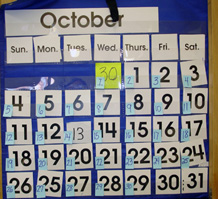How can we keep track of our mini-lake materials?
Plan Investigation 2

In this investigation, students measure the volume of each material they will add to their mini-lake, study the relationship between weights and volumes, and then assemble their lakes.
Formative Assessment
Available online at inquiryproject.terc.edu
Do students understand that volume is the amount of 3-dimensional space sand (or gravel or water) takes up inside a vial?
Observe students’ estimation strategies to find evidence that they understand volume is a 3–dimensional measurement.
Keep these questions in mind as you interpret students' estimation strategies:
- If students measure the height of the sample, do they use this dimension to figure out the 3–dimensional volume?
- If they measure the area (footprint) of the sample, do they recognize there is another dimension?
- Do they find a way to replicate the volume of sample using cubes instead of gravel?
Students often confuse volume in 3 dimensions with height, area or perimeter. In the following video, identify the strategy and decide if it is viable or not.
As a next step, ask students to show and explain the strategy they used.
In the process, they are likely to discover that the weights of the individual materials in their mini-lake do not add up to the weight of the completed lake. Why the difference? When we expect one outcome and get another, it's important to make sense of the unanticipated result. This puzzle solving is particularly important in science, where the goal is to build new understandings of how the natural world "works." Such differences call for scientists to review their work and try to figure out why expectations don't match outcomes.
By the end of this investigation students will understand that weight and volume can help them to keep track of changes in their mini-lakes. They will also understand the importance of seeking an explanation for an unexpected outcome.
Learning Goals
- Understand the concept of volume
- Understand the importance of identifying possible sources of measurement error
| Sequence of experiences | ||
|---|---|---|
| 1. Review volume | All Class | 15 Mins |
| 2. Collect data and build mini-lakes | Pairs | 20 Mins |
| 3. Make meaning | All Class | 10 Mins |

Materials and Preparation
For the class:
- Post the investigation question in a place where all students can see it.
- On a classroom calendar, write the number 1 on the date students complete their mini-lakes (today), and add consecutive numbers for every day, including weekends, through the time period you expect you'll need to complete the curriculum unit.
For each group:
- 1 digital scale; numbered by group
- 1 12in strip of masking tape
- 1 12oz cup holding 30 centimeter cubes
- 2 12oz cups
- 2 100ml graduated cylinders
- 2 funnels; conical paper cups with 1/2" snipped off the end
- 2 sandwich boxes with covers
- 2 sets of four vials holding sand, gravel, rocks, and water (from previous investigation)

Note: Your students will need to know how to work with a 2-axis time plot to make entries into the Weight of mini-lake over time plot.












